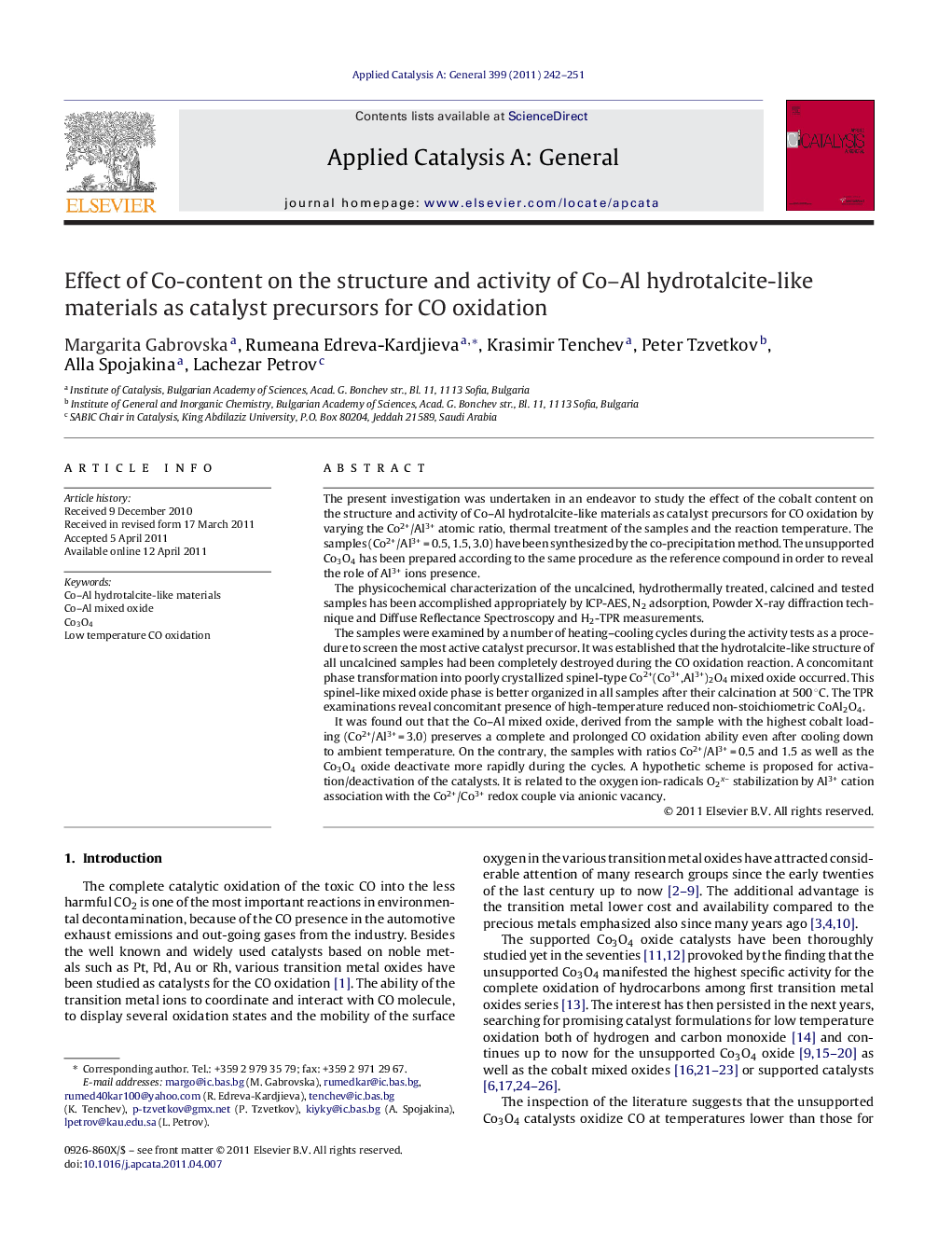| Article ID | Journal | Published Year | Pages | File Type |
|---|---|---|---|---|
| 41451 | Applied Catalysis A: General | 2011 | 10 Pages |
The present investigation was undertaken in an endeavor to study the effect of the cobalt content on the structure and activity of Co–Al hydrotalcite-like materials as catalyst precursors for CO oxidation by varying the Co2+/Al3+ atomic ratio, thermal treatment of the samples and the reaction temperature. The samples (Co2+/Al3+ = 0.5, 1.5, 3.0) have been synthesized by the co-precipitation method. The unsupported Co3O4 has been prepared according to the same procedure as the reference compound in order to reveal the role of Al3+ ions presence.The physicochemical characterization of the uncalcined, hydrothermally treated, calcined and tested samples has been accomplished appropriately by ICP-AES, N2 adsorption, Powder X-ray diffraction technique and Diffuse Reflectance Spectroscopy and H2-TPR measurements.The samples were examined by a number of heating–cooling cycles during the activity tests as a procedure to screen the most active catalyst precursor. It was established that the hydrotalcite-like structure of all uncalcined samples had been completely destroyed during the CO oxidation reaction. A concomitant phase transformation into poorly crystallized spinel-type Co2+(Co3+,Al3+)2O4 mixed oxide occurred. This spinel-like mixed oxide phase is better organized in all samples after their calcination at 500 °C. The TPR examinations reveal concomitant presence of high-temperature reduced non-stoichiometric CoAl2O4.It was found out that the Co–Al mixed oxide, derived from the sample with the highest cobalt loading (Co2+/Al3+ = 3.0) preserves a complete and prolonged CO oxidation ability even after cooling down to ambient temperature. On the contrary, the samples with ratios Co2+/Al3+ = 0.5 and 1.5 as well as the Co3O4 oxide deactivate more rapidly during the cycles. A hypothetic scheme is proposed for activation/deactivation of the catalysts. It is related to the oxygen ion-radicals O2x– stabilization by Al3+ cation association with the Co2+/Co3+ redox couple via anionic vacancy.
Graphical abstract.Figure optionsDownload full-size imageDownload high-quality image (133 K)Download as PowerPoint slideHighlights► Coprecipitated Co–Al hydrotalcites as catalyst precursors in CO oxidation. ► Comparison of the results with unsupported Co3O4. ► Complete and prolonged CO oxidation at room temperature on Co–Al sample with the highest cobalt content. ► Oxygen ion-radicals O2x– stabilization by Al3+ cation. ► Hypothetic scheme about the active ensemble.
